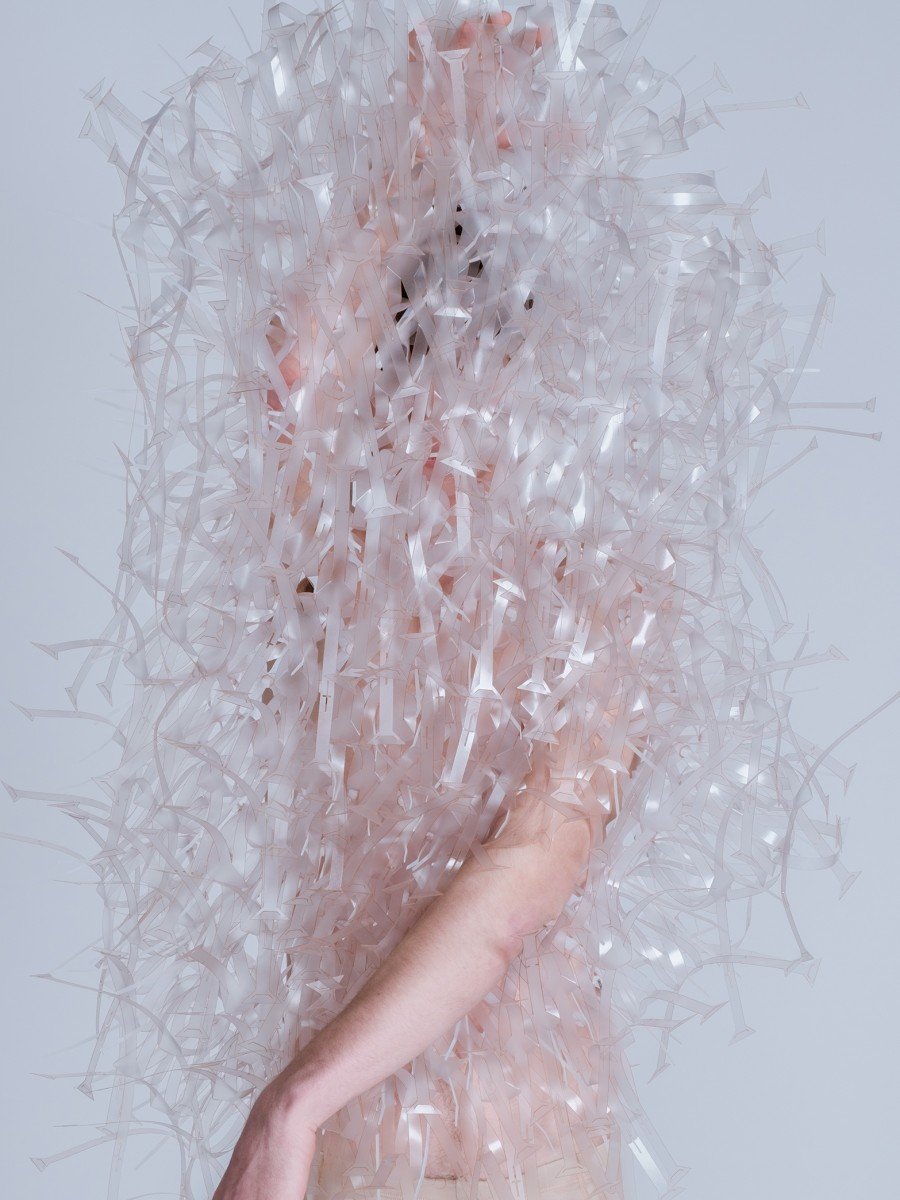
The possibilities of automation, 3D printing and wearables sound spectacular, but have so far hardly found application in the fashion industry. This is due on the one hand to a lack of market maturity and on the other hand to designers who feel limited in their creativity by technology.
New technologies in fashion are always successful if they facilitate production and enable novel effects. Just think of the invention of the sewing machine or the Jacquard loom. The last great innovation was the 3D knitwear – which, however, was hardly echoed in the public discourse. This discrepancy between utopia and reality may also be due to the fact that the fashion industry itself has so far hardly been involved in the development of new technologies.
Fashion perspective
The Institute for Fashion and Technology (F&T) at the Linz University of Art and Design is researching the possibilities of new technologies from the perspective of fashion. The course offers training in contemporary fashion design with a focus on innovation and technology and is led by two fashion experts from the fields of design and apparel technology. They see fashion and technology as more than e-textiles or wearables, where the aim is to optimise the body. These have no great relevance in fashion. The fundamental change in which the fashion industry finds itself is rather guided by eco-social factors, explained co-director Christiane Luible-Bär in an Interview.
At a time when the apparel industry is at the top of the environmental organisations’ agenda and trend researcher Lidewij Edelkoort is predicting the decline of companies seeking mere profit maximisation, students at F&T are called upon to critically examine the mechanisms of the fashion industry. The following are up for discussion:
- the relationship between body and mediatized environment;
- the usual design and production conditions;
- the relevance of fashion as a means of social exclusion;
Creating something new
In the relationship between fashion and technology, F&T takes an integrative view. Fashion and technology are not understood as two separate spheres that merely encounter each other, but as a mixture from which new processes, materials, forms and reciprocal relationships emerge – and finally also a new aesthetic. In this paradigm, interactivity can exist not only at the electronic level, but also at the biological or mechanical level.

Analog vs. digital
The individual projects are preceded by theoretical approaches. If this seems more plausible with regard to the artistic vision, projects will also be made using manual techniques.
An example for analog processes are the works of the student Nina Krainer, who wants to represent the value of handicraft in a digital world. Her works look like they have been printed from a 3D printer, but are the result of careful manual work. Nina Krainer: “The material radiates a certain hardness and coolness and suggests a rigid plastic, ceramic or gypsum-like material. This impression is haptically refuted. The objects are soft and flexible”.
Julio Escudero, another student, uses digital techniques to redefine the concept of the body. The modifiable parameters in the Grasshopper software make it possible to reshape silhouettes – the execution of which is possible by means of23 the Rhinozeros 3D software. Escudero: “Many designers today use parametric design – there is the possibility to visualize the final result without many prototypes. You can also find and correct errors in the program before the piece is made. This saves a lot of time and money. That’s why I like these visualizations. But I only use them as inspiration for silhouettes or shapes and also do a lot of manual work to bring in the human – and new ways of interacting with technology”. In the analog version, Escudero worked with experimental construction techniques, high-precision tools such as laser and CNC cutting, and traditional sewing.

Spectacular production
In one respect, the F&T follows the current practices in the fashion industry – in the spectacular presentation. Here, too, alternative forms beyond the catwalk are pursued.
- In 2016, anatomies of fashion were shown at the Ars Electronica Deep Space – using state-of-the-art computer tomography software. The presentation took place live, 3D and in 8K resolution. Deep Space stands for a projection that extends over an area of sixteen by nine meters of wall and sixteen by nine meters of floor.
- In 2017 the designs of the students were shown on industrial robots in stereoscopic selfie videos.
- In 2018, a platform event with a round table discussion and keynotes was held as part of ARS Electronica. The aim was to stimulate a discourse on the political aspect of fashion and technology.
The Institute for Fashion & Technology was launched in October 2015. In February, the first students completed their Bachelor’s degree. The first Master’s course starts in March.
Also interesting:
Flora Miranda presents its Deep Web collection at the Couture Shows in Paris
Tailoring for customized technologies
